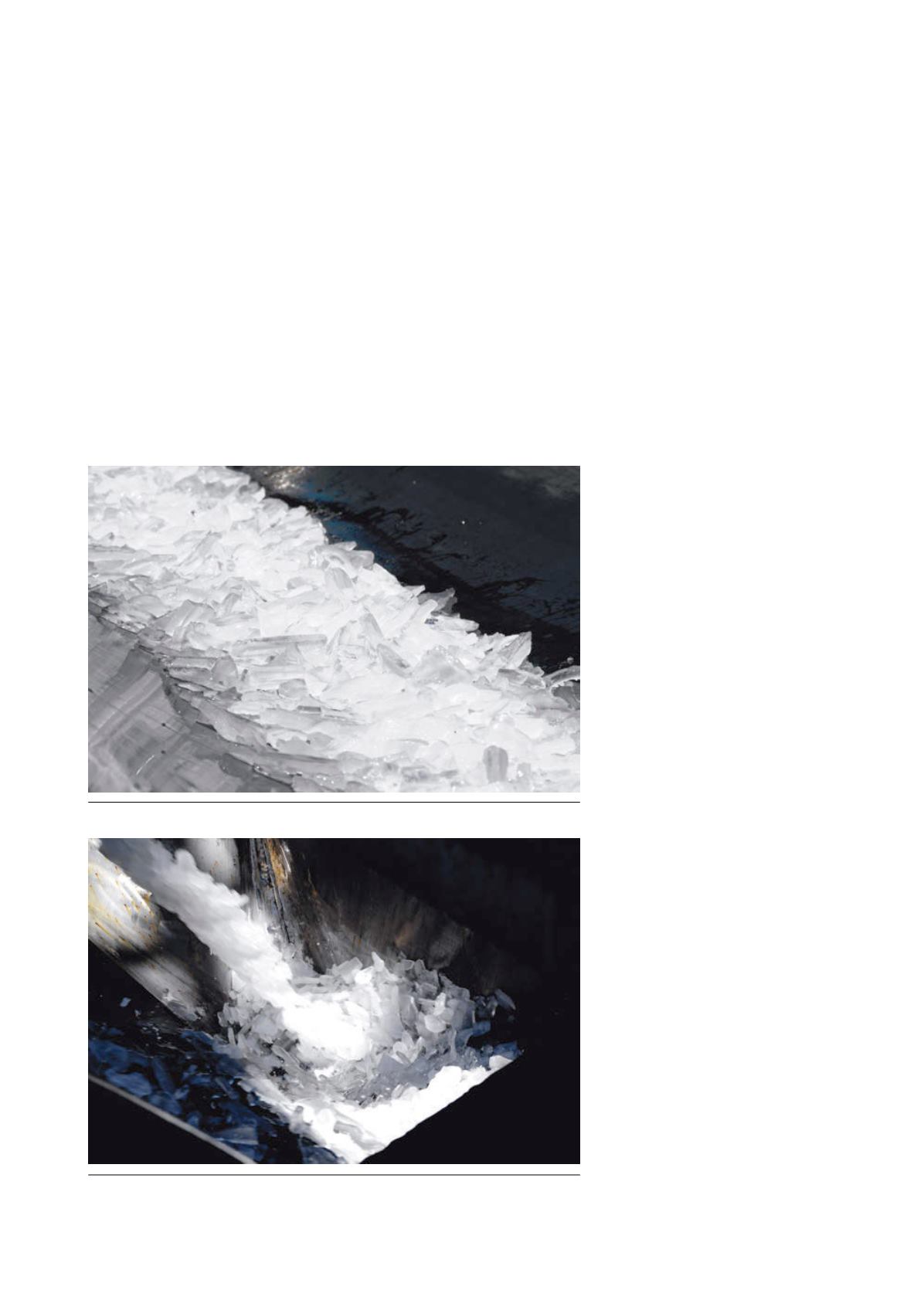
fusion 333 kj/kg). It falls down the PVC
pipe at a higher speed (2 km in 90 sec.)
and still reaches the different mine
levels at 0˚C, with minimal heat-loss.
These unique properties make ice an
attractive and energy‑efficient cooling
medium in the global deep mine
cooling strategy, especially when
implemented from the start.
Indeed, once a mine reaches 1000 m,
the changeover from one strategy to
another is not always possible. Early
choices may prohibit the use of
alternative solutions at a later stage if ice
systems have not been envisaged in the
general strategy from the very
beginning, according to the life
expectancy of the mine.
Ice cooling systems
Ice has been one of the earliest methods
of temperature control in underground
mines. At the end of the nineteenth
century, naturally produced ice blocks
were already transported in ore cars to
cool North American mines. The rather
primitive method was soon superseded
with surface water chilling systems,
pumping water through the mine. Yet
the mass flow of water introduced into
the deep mines is huge and associated
electricity costs for pumping up a
thousand tonnes of water daily over
several kilometres is soon a deterrent.
With the advent of a new generation
of modern ice plants cooling systems, the
use of ice cooling systemwas considered
again by several African mines. After
mixed results with liquid ice,
encouraging results were obtained from
using solid ice (98% ice mass fraction). To
put it simply, the ice systems:
n
n
Significantly lowered the
temperatures at the centre of the
mine.
n
n
Drastically reduced the mass flow
of water to be pumped up to the
surface.
n
n
Overcame the limitations of heat
rejection underground.
n
n
Provided megawatts of refrigeration.
n
n
Saved pumping energy.
n
n
Enabled thermal storage.
These benefits stem from the unique
physical property of the ice.
Furthermore, successful implementation
in the field was facilitated by the
capability of the refrigeration industry to
come-up with pre-fabricated plants at
economical costs that are more modern,
energy‑efficient and reliable.
Benefits of ice over water
One main benefit of using ice instead of
water is to reduce the mass flow and
therefore the volumes of water to be
pumped-up to surface after cooling.
Ice is pure cooling energy. Thanks to
its unique latent heat of fusion, (capacity
to absorb heat as it melts), a given mass
of ice provides much more cooling than
the same water quantity. While one litre
of water absorbs 4 kj/K, 1 kg of ice
absorbs 333 kj as it melts (from -0˚C to
+0˚C). Introducing ice in the mine shaft
thus reduces the liquid mass being
returned to surface.
Another advantage is the reduced
heat-loss while the cooling medium is
travelling from the surface to the stope.
Chilled water picks up 5˚ for every 1 km
travelled underground. Water is already
lukewarm as it reaches the low levels.
On the contrary, ice drops down in a few
seconds, with only minimal warm-up
and melt (the heat intake is in the range
of 10 kj/kg/1000 m). After thawing, the
melt water is still colder than any water
introduced from the surface.
The first illustration of this cooling
method is drawn from a mine that
needed to reduce a heat load of 15 MW
by introducing 5˚C water in an
Small ice on the conveyor to the shaft – pure cooling energy.
Ice input into the main.
50
|
World Coal
|
March 2016


